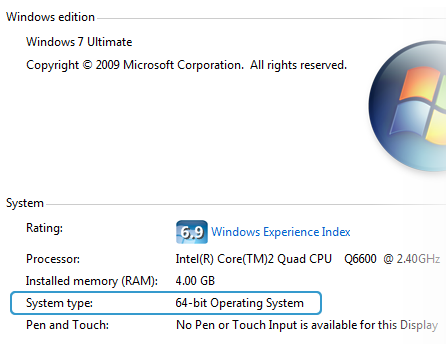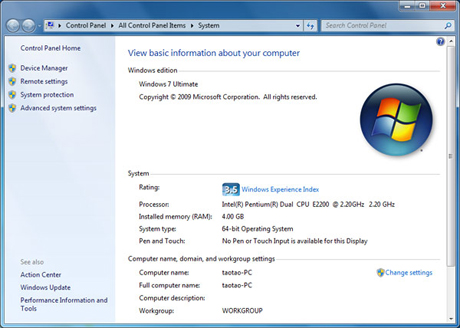64 Bit Operating System Details
In computer architecture, 64-bit computing is the use of processors that have datapath widths, integer size, and memory addresses of 64 bits (eight octets) wide. Also, 64-bit CPU and ALU architectures are those that are based on registers, address buses, or data buses of that size. From the software perspective, 64-bit computing means the use of code with 64-bit virtual memory addresses.
The term 64-bit is a descriptor given to a generation of computers in which 64-bit processors are the norm. 64 bits is a word size that defines certain classes of computer architecture, buses, memory and CPUs, and by extension the software that runs on them. 64-bit CPUs have existed in supercomputers since the 1970s (Cray-1, 1975) and in RISC-based workstations and servers since the early 1990s. In 2003 they were introduced to the (previously 32-bit) mainstream personal computer arena in the form of the x86-64 and 64-bit PowerPC processor architectures.
A 64-bit register can store 264 (over 18 quintillion) different values. Hence, a processor with 64-bit memory addresses can directly access 264 bytes(=16 exbibytes) of byte-addressable memory.
In computer architecture, 64-bit computing is the use of processors that have datapath widths, integer size, and memory addresses of 64 bits (eight octets) wide. Also, 64-bit CPU and ALU architectures are those that are based on registers, address buses, or data buses of that size. From the software perspective, 64-bit computing means the use of code with 64-bit virtual memory addresses.
The term 64-bit is a descriptor given to a generation of computers in which 64-bit processors are the norm. 64 bits is a word size that defines certain classes of computer architecture, buses, memory and CPUs, and by extension the software that runs on them. 64-bit CPUs have existed in supercomputers since the 1970s (Cray-1, 1975) and in RISC-based workstations and servers since the early 1990s. In 2003 they were introduced to the (previously 32-bit) mainstream personal computer arena in the form of the x86-64 and 64-bit PowerPC processor architectures.
A 64-bit register can store 264 (over 18 quintillion) different values. Hence, a processor with 64-bit memory addresses can directly access 264 bytes(=16 exbibytes) of byte-addressable memory.
64 Bit Operating System
64 Bit Operating System
64 Bit Operating System
64 Bit Operating System
64 Bit Operating System
64 Bit Operating System
64 Bit Operating System
64 Bit Operating System
64 Bit Operating System
64 Bit Operating System
64 Bit Operating System
64 Bit Operating System
64 Bit Operating System
64 Bit Operating System
64 Bit Operating System
64 Bit Operating System
64 Bit Operating System
64 Bit Operating System
64 Bit Operating System
64 Bit Operating System
64 Bit Operating System
64 Bit Operating System
64 Bit Operating System
64 Bit Operating System
64 Bit Operating System
64 Bit Operating System
64 Bit Operating System
64 Bit Operating System
64 Bit Operating System
64 Bit Operating System
64 Bit Operating System
64 Bit Operating System
64 Bit Operating System
64 Bit Operating System
64 Bit Operating System
64 Bit Operating System
64 Bit Operating System
64 Bit Operating System
64 Bit Operating System
64 Bit Operating System
64 Bit Operating System











-Mycomputer.png)






No comments:
Post a Comment